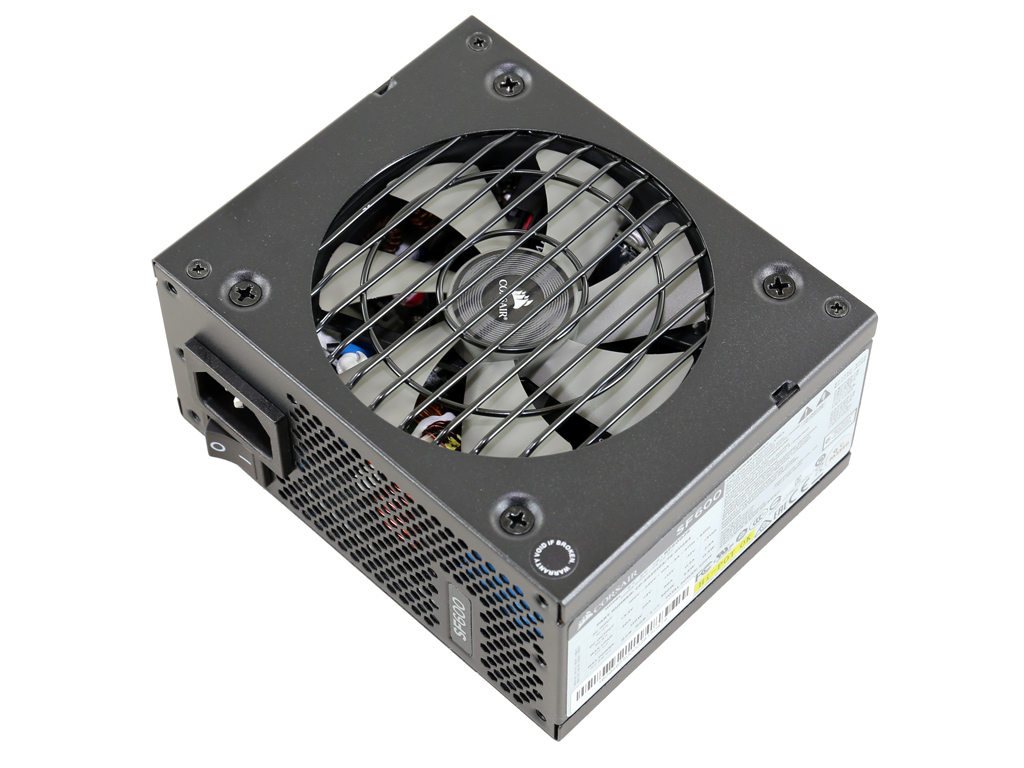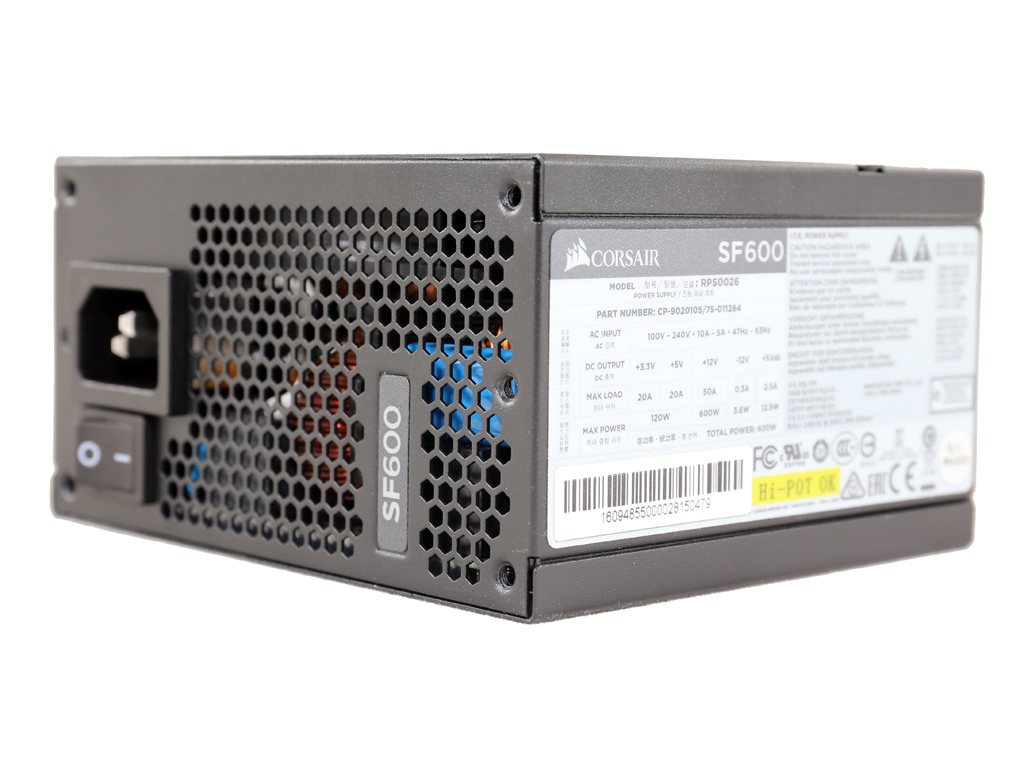Tom's Hardware Verdict
Corsair's SF600 is currently the best SFX PSU with 600W capacity, however it would be even better if it had more connectors and its fan profile wasn't so aggressive. In addition, Corsair should include an SFX to ATX adapter in the bundle.
Pros
- +
Full power at 47 °C • Efficient • Ripple Suppression • Load regulation • Transient response • 5VSB performance • Compact dimensions • Quality caps • Build quality • Fully modular • Hold-up time • Warranty
Cons
- -
Price • Noisy • No option to deactivate the semi-passive mode • Single EPS connector • Should have more PCIe and SATA connectors • No Berg adapter is provided • ATX cable should be longer • No SFX to ATX adapter
Why you can trust Tom's Hardware
Introduction
Corsair escalated the war for SFX form factor supremacy where, until recently, only SilverStone sat atop the throne. Most vendors don't seem to care much about this category. But now that Corsair is involved, that could change. Size limitations make it hard to build a high-performance SFX-based PSU that isn't super loud. Airflow is restricted, and it's tough to find room for big fan blades. As a result, most SFX PSUs have to rely on noisy 80mm fans that spin fast to keep up with cooling.
Instead, Corsair uses a 92mm fan in its SF600, which benefits from a semi-passive mode under light workloads. This model has 150W more capacity than the SF450 we recently reviewed though, so its thermal load is greater and the fan has to work harder to cope with waste heat. As you can imagine, that translates to more noise. If you want 600W of power from such a compact PSU, then you have to be aware of the trade-offs.
Like its smaller sibling, the SF600 is 80 PLUS Gold-certified and fully-modular. It also uses the same cooling fan, though in this case the fan profile is notably more aggressive. Despite the fact that the SF600 offers 150W more capacity than the SF450, it uses the same cable configuration. We find this to be a bit odd and leaves us wondering what to do with the extra wattage. A 600W PSU can drive a couple of high-end graphics cards and an overclocked CPU. But with only two PCIe connectors, the SF600 natively supports just one enthusiast-class GPU. It's a shame that Corsair cripples the SF600's usability like this. To make matters worse, the modular panel is exactly the same as the SF450's; there are no open sockets for extra cables.
Specifications
The SF600 is 80 PLUS Gold-rated, fully modular, Haswell-ready and able to deliver its full power continuously at up to 50 °C ambient. Considering its compact dimensions, that's not as easy to achieve as it sounds. According to Corsair, all necessary protection features are provided, including over-temperature protection, which is especially crucial in units featuring a semi-passive mode. The 92mm cooling fan should last for quite a while thanks to its rifle bearing. Finally, we approve of Corsair's seven-year warranty.
Power Specifications
| Rail | 3.3V | 5V | 12V | 5VSB | -12V | |
|---|---|---|---|---|---|---|
| Max. Power | Amps | 20 | 20 | 50 | 2.5 | 0.3 |
| Watts | 120 | 600 | 12.5 | 3.6 | ||
| Total Max. Power (W) | 600 |
The minor rails are strong with 120W max combined output and so is the +12V rail, which can deliver up to 50A. Meanwhile, the 5VSB rail has the minimum allowed amperage for a modern PSU.
Cables And Connectors
| Modular Cables | ||
|---|---|---|
| Description | Cable Count | Connector Count (Total) |
| ATX connector 20+4 pin (300mm) | 1 | 1 |
| 4+4 pin EPS12V (400mm) | 1 | 1 |
| 6+2 pin PCIe (400mm) | 2 | 2 |
| SATA (100mm+115mm+115mm+115mm) | 1 | 4 |
| Four-pin Molex (100mm+115mm+115mm+115mm) | 1 | 4 |
The SF600's cable configuration is identical to the SF450, which doesn't make sense to us. Able to output an extra 150W, the SF600 should be equipped with more cables (including additional PCIe and EPS connectivity). Moreover, four SATA connectors is a bit light for a 600W PSU, even if it's destined for a small form factor chassis. Sure, limited space on the modular PCB imposes design limitations, but Corsair could still give you two connectors on a PCIe cable instead of one.
In short, the provided connectors don't match up well to this PSU's capacity, and Corsair should address the issue. We would also like to see a Berg (FDD) adapter included with the bundle for anyone who might need it. Everyone else could set it aside in the provided felt bag.
Get Tom's Hardware's best news and in-depth reviews, straight to your inbox.
All connectors use standard 18-gauge wires, which are recommended by the ATX spec.
Power Distribution
Since this PSU features a single +12V rail, we do not have anything to say about its power distribution.
MORE: Best Power Supplies
MORE: Power Supplies 101
MORE: How We Test Power Supplies
MORE: All Power Supply Content

Aris Mpitziopoulos is a contributing editor at Tom's Hardware, covering PSUs.

